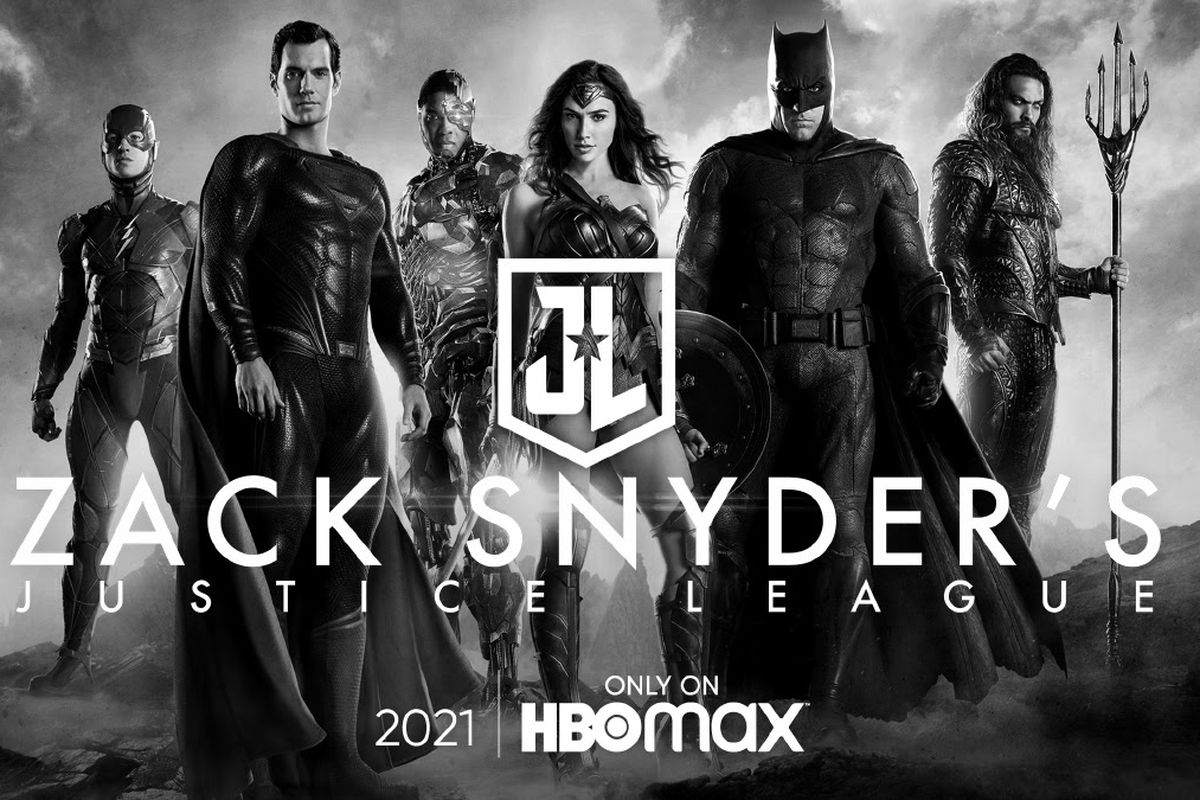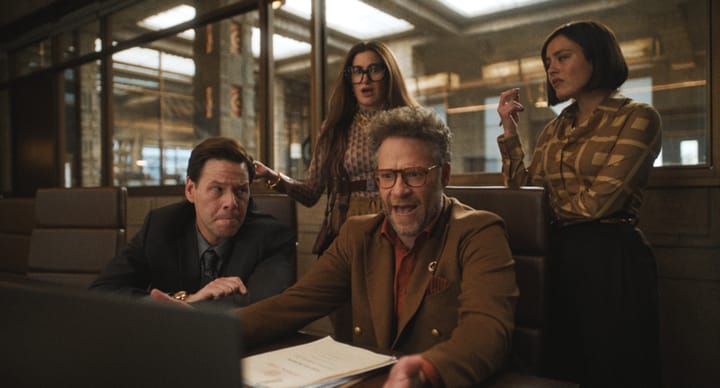Justice For Justice League

Earlier in the year, HBO announced the premier date and released a new trailer for the Zack Snyder’s Justice League(ZSJL), and it was all becoming more real. It was one of the final steps in a journey that really seemed to be an eternal pipe dream, a myth that would be whispered about forever. Always hearing about the raw version circulating around, but never actually seen.
But here we are. No longer a ghost, a myth, make believe. It’s real!
But the fact that it’s real, how we got here, and what it means going forward as the industry is in a state of constant flux is almost more interesting than whether the film is better than the original. Though that will play a factor in its influence for the future.
As has been covered plenty, and you probably already know if you are reading this, Zack Snyder was replaced as the original director of the Justice League after most of the principal photography completed and post-production had begun. The widely accepted reason is a family tragedy, the death of Snyder’s daughter, and he had to leave due to those difficult circumstances. He was replaced by Josh Whedon of The Avengers fame, who seemingly took the film in a substantially different direction, using what was available, with some new additions in re-shoots.
Now there are other whispers that Warner Brothers was not happy with the rough cuts that Snyder had been turning in and used this as a convenient way to make the switch.
Either way, Snyder wasn’t able to finish his vision of the story. And when the Whedon version (the theatrical cut), with its many re-shot scenes and changed tone, hit theaters it was widely panned. It felt like a film every bit it was coming from two different minds mashed together. It was messy, empty, without connection, be it the audience or prior narratives. Especially coming from these two with vastly different directing and visual styles, it didn’t have a sense of itself. In short, it lacked a singular voice.
Since then, there has been a groundswell calling for the release of the Snyder cut as he originally intended it to be released. Rumors and speculation grew that there was a cut, while in a state that needed finishing (CGI, color correcting, etc.), close enough in narrative structure that it could be completed and released. The belief was the original director’s vision would have been a better, more complete representation of the story arch started in Man of Steel, had he be allowed to finish.
This is where the folklore and myth begin to take hold. And I’ll be honest, I bought into that logic, which oddly doesn’t actually track well with my own feelings toward the DCU up to this point. While I was disappointed in the Whedon version when it was released for the reasons of unbalanced tone and fractured story beats, I haven’t liked much of what Zack Snyder has produced for the DCU either.
I was so hyped up for the release of Man of Steel, that it was one of the biggest disappointments I’ve ever had watching a movie in a theater. The cognitive distance between the trailer and what was the final film was brutal. But my endearment for the DCU was strong, and I was actually okay with, though not exactly wowed by, Batman v Superman. What I came to terms with is what Snyder brings is a unique look and tone, but his films doesn’t always elevate with story narrative and execution. Annnnd trailers really maximize his strengths.
So, here I was, on team #ReleasetheSnyderCut, which felt strange, like being a part of a cult, but I really wanted it to happen. And seemingly, so did the principal actors. While it felt weird being in this camp, there are a few reasons, that I can identify.
Chief among them being that the while the Whedon version was a big disappointment, it had the bones of a good movie in it, that I attributed to the Snyder version. Also at the time, I was bowled over by the recent release of Wonder Woman, along with the fact that Wonder Woman was the best part of Batman versus Superman. It gave me hope that Warner Brothers and Snyder, were beginning to figure out its plan with the DCU and bring a more cohesive vision. But that hope turned to disappointment with the Justice League theatrical version. That disappointment, and hope, lead to wanting, needing, the self-indulgent to know what Snyder intended was truly on a better narrative path.
This leads to the other point that in the previous DCU films there have been narrative beats that pointed toward a larger vision of the story (like the Knightmare). Waypoints on a map to a final destination. The Whedon version pretty much cut out any elements alluded to from previous films. It was mostly a self-contained story as far as the villains and subplots go.
This is probably the biggest reason I hoped for the release of the Snyder cut. The groundwork was laid out to have a connective story arc throughout the larger universe, much like the Marvel Cinematic Universe. While not quite a cohesive, with many stumbling blocks along the way, I wanted to see this through. And it seemed, only the Snyder cut could take it across the line. The more expansive storylines with an ultimate big bad being paid off is what I love about the current generation of cinematic story telling. It was teed up and I wanted my payoff.
And knowing that the payoff existed is probably the most obvious reason I wanted to see the Snyder cut. Typically, in these situations, a director would be replaced before principal filming and not replaced halfway through a planned franchise that he has been the guiding hand, for better or worse. The change over here happened in post-production. He shot his story, it existed as real footage. Release it to the world and let it sink or swim on its merits.
So even though I’ve been lukewarm on the prior Snyder entries, I still wanted to see his version of Justice League. While his former entries were okay at best, the Whedon version was so unfulfilling, the catnip of at least seeing this through to its original conclusion from its original creator was alluring.
Because of this, I was hopeful that a full telling by the original director could lead to a good film, the past be damed.
And even while the failure of Justice League at the box office set in motion a change of approach and abandoning the current concept of a connected universe for the DCU and WB, that didn’t change anything. It's a weird form of self-torture, to want to hope for something that is dead before it’s had a chance to be alive.
Thankfully for us, we are bystanders in the era of the Streaming Wars. And needing a better weapon, in the form of headline grabbing content, Warner Brothers green lit the Zack Snyder Justice League cut for its fledgling streaming platformHBOMax.
Which is a stunning turnabout. This is unfathomable in the old paradigm of Hollywood. Capitulating to a small size of a group of fans calling for a rerelease of a cut of a movie has never happened. Occasionally on television, but the scale and financial risk is much lower. But we are in the early Wild West days, and anything that will create buzz is worth its weight in production costs.
And I think this is genuinely a great idea to try. Why not feed the appetite for different and unique content, something that only you can (in this case, WB) can provide? It’s a novel approach that is low risk with high upside.
Worst case it isn’t well-received, but people still check it out, it creates buzz, and you have it in your catalogue. Best case, is you create a whole new avenue for directors to showcase on your platform, by releasing their director cuts for their films (that you own) to your streaming platform. You double-dip and spread the wealth to you different outlets, from theatrical to streaming, and creators are excited about being allowed to show their full vision with less commercial restraints.
I know, a Director’s Cut is not a new, unique, or original but in this circumstance it is a new take on it. Sure it is a distinct situation, but imagine, even older movies dusted off and updated with footage originally left out of the theatrical cut. Or, as is the case with Justice League, reworking failed films to correct the mistakes, giving them a second life with a different set of scope, intention, and freedom.
We are trained that the original version is the conical version, but what if films that aren’t well-received can gain new life on streaming platforms. Although I think ZSJL was a bit on the long side, at home streaming is the better venue for longer versions and give the director the storytelling flexibility they crave.
Now I totally get that this all sounds like an idea that could go really bad, really fast. Directors with free rein where classics get reworked and robbed of what made them special in the first place, à la the Star Wars remasters from the 90s. There is definitely an argument that the art the gets consumed by the audience is now theirs and the permanence of the art is part of what defines it.
I get it. I’m a believer that working with restrictions, can result in a better final product. But I would argue that as an experiment, it is fascinating to be able to remold a work of artistic expression. While paintings dry, film’s canvas can be molded and remolded.
I am rooting that this endeavor is a success. Both because I would love the chance of revising the Snyder DCU and for the possible future of dual versions of films. Theatrical cuts for general audiences, honed in a traditional mold. Then Director Cuts for the biggest, most intent fans hits the streaming platforms, hewing closer to the directors full intention and proclivities. That sounds fun to me.
And with an ever-changing landscape in both the business and creative aspects of entertainment, the best way to maximize the potential of both is for both to work together and be open to trying new ideas.





Comments ()